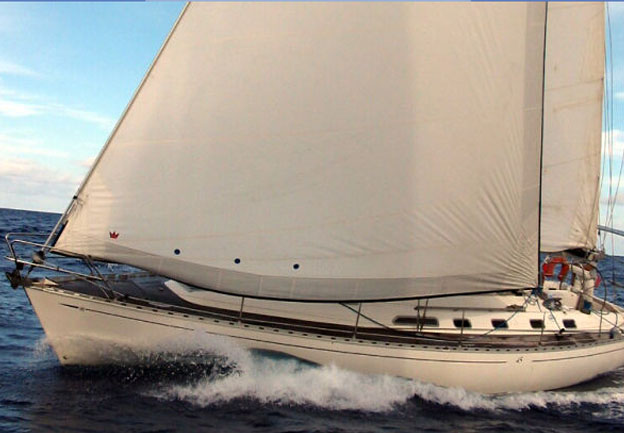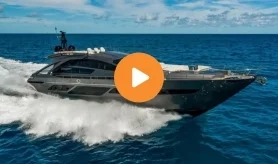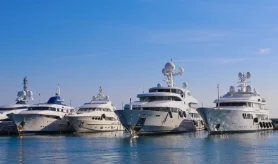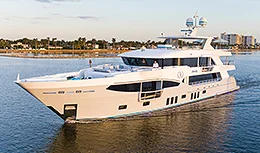- Alaskan Yachts
- Azimut Yachts
- Back Cove Yachts
- Beneteau Yachts
- Benetti Superyachts
- Bertram Yachts
- Boston Whaler
- Broward Yachts
- Buddy Davis Sportfish
- Burger Yachts
- Cabo Yachts
- Catamarans
- Carver Motoryachts
- Center Console
- Chris-Craft Yachts
- Cruisers Yachts
- DeFever Trawlers
- Dufour Sailboats
- Fairline Yachts
- Feadship Yachts
- Ferretti Yachts
- Formula Yachts
- Fountaine Pajot Cats
- Grady-White
- Grand Banks Trawlers
- Hargrave Yachts
- Hatteras Yachts
- Hinckley Picnic Boats
- Horizon Yachts
- Hydra-Sports
- Intrepid Boats
- Jarrett Bay Sportfish
- Jeanneau Yachts
- Kadey-Krogen Trawlers
- Lazzara Yachts
- Lekker Boats
- Luhrs Sportfish
- Marlow Yachts
- Maritimo Yachts
- Marquis Yachts
- Mazu Yachts
- McKinna Motoryachts
- Meridian Yachts
- Midnight Express
- MJM Yachts
- Mochi Craft
- Neptunus Motoryachts
- Nordhavn Trawlers
- Nordic Tugs
- Numarine Yachts
- Ocean Alexander Yachts
- Ocean King
- Offshore Yachts
- Outer Reef
- Oyster Sailing Yachts
- Pacific Mariner Yachts
- Palmer Johnson Yachts
Boat Review: 45 Dufour
Boat Review: 45 Dufour

Source: Robert H. Perry, Sailingmagazine.net
Performance cruiser
I think Dufour was the very first French production builder I was aware of. I even sailed a Chicago-Mackinac race on one of its early Arpege model half-tonners. My old dock pal Roman lived aboard an early Dufour for years at Shilshole. This new Dufour model designed by Umberto Felci with an interior designed by Patrick Roseo is a far more refined boat than those early models. Today the focus is on dual-purpose use, i.e. cruising and racing. Come to think of it, that’s not much different than the design approach used in the early 1970s.
This is a very standard-looking hull from what I can see on the promotional material. It’s impossible to discuss hull form nuances when you don’t have hull lines. The D/L for the standard model is 168.5. The race, or “Fastnet,” version is 507 pounds lighter and draws 7 feet, 7 inches compared to the standard version’s 6 feet, 5 inches. Both keels are fins with vertical leading edges and bulbs.
The difference in displacements is due to the deep keel being lighter than the standard keel. You also get a deeper rudder on the Fastnet model. The L/B is 3.24. It’s interesting to see how the max hull depth is quite far aft on this designed compared to where you see it on Vincitore. Sometimes I think that moving max hull depth aft has more to do with squeezing the engine in than it has to do with performance.
There are two layouts available. There is a typical three-cabin layout with double V-berth and mirror image enclosed double quarterberths aft. There is also what they call a “four-cabin” layout that shoehorns in another mini stateroom forward of the saloon with upper and lower single berths. You have to walk through this cabin in order to get to the V-berth stateroom. It’s a tight area. The saloon is nice but the pics show a box structure under the forward end of the table that does not appear on the drawings. Joinerwork looks quite traditional and well finished. The galley is fine but of course is compromised due to the door to the port quarter cabin. If you could give up that stateroom you could wrap the galley around and gain a lot more cockpit locker volume, but that’s a big change and not offered in these models.
The Fastnet model has a taller rig with three spreaders swept 21.5 degrees, Dyform rigging, Dyneema running rigging and a double-ended, or German, mainsheet system. The SA/D for this rig, considering its lighter displacement and additional rig height, is 20.48. If you go with the standard two-spreader rig you get an SA/D of 18.86. The jib furler is below the deck. On both rig versions there is considerable overlap of the mainsail on the backstay but that is to be expected with boats of this style and roachy mains today. The sailplans show this boat to be conservatively styled with a low cabintrunk and short-ish cockpit seat coamings. It’s a good looking boat.
I like this deck plan. The side decks are wide and clear of obstructions. The jib tracks are snug up against the cabintrunk sides. There are plenty of hatches, although the “sail locker” hatch appears too small to easily cram a chute through. The cockpit is spacious with the forward seats having high seat backs. Twin wheels—in the Fastnet model they are very cool, three-spoke carbon fiber wheels—allow access to the broad door in the transom. The helmsman will sit on the deck and have a clear view of the instruments, which are cleverly mounted in the aft ends of the cockpit coamings. The mainsheet traveler spans the cockpit sole directly forward of the twin wheels. With the Fastnet version you get two additional winches aft for the German-style mainsheet arrangement and the spin sheets. There is a large, removable cockpit table.
For performance reasons I favor the Fastnet version. This would make a good boat for the family that wants to both cruise and have fun with some weekend club racing. There is no better way to learn how to make your boat go than to enter a few races.
Boat Specification: 45 Dufour
LOA 45’9”;
LOH 44’7”;
LWL 39’11”;
Beam 14’1”;
Draft 6’5” (standard), 7’7” (deep);
Displacement 23,964 lbs.;
Ballast 7,341 lbs.;
Sail area 944 sq. ft.; SA/D 18.86; D/L 168.5; L/B 3.24; Auxiliary Volvo 55-hp; Fuel 66 gals.; Water 140 gals.



